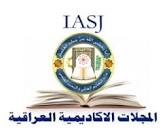Estimates of Heterosis, Gene action, Heritability and Genetic Advance of Flour Content and some Goodness Characters of F2 Hybrids Grain from Diallel Crosses in Bread Wheat (Triticum aestivum L.)
Abstract
Grains of five varieties of bread wheat (Triticum aestivum L.) (Intesar, Rabbea'a, Abu-Greeb-3, Adnanyi and Al-Eaz) along with their F2 hybrids grains from diallel crosses were used to study heterosis, general and specific combining ability, phenotypic variance components, percentage of heritability, average degree of dominance and expected genetic advance for grains flour content, bran content, extracted flour, wet and dry gluten content, fermentation time. Desirable and significant heterosis was observed for some F2 hydrids, (Intesar x Adnanyi) for total flour contern and extracted flour, (Intesar x Abo-Greeb-3) for wet an dry gluten < ( Rabbeaa x Adnanyi) for fermentation time and (Abu-Greeb-3 x Al-Eaz) for bran content. The general and specific combining ability variances were significant for the studied characteristic of the non-additive gene effect were more important than the additive gene effect for determining these characters except for wet gluten content. The additive, dominance and environmental variances were significant for all characters. Most of the studied traits revealed high to medium broad sense heritability and medium to low narrow since heritability. There is an over dominance for total flour content, bran content, extracted flour and dry gluten content and fermentation time but partial dominance for wet gluten content. The values of genetic advance indicated that direct selection will be effective in F2 generation to improve the bran content and wet gluten content. Recurrent selection or selection in the following generation suggested to increase the desirable alleles for the other traits.




